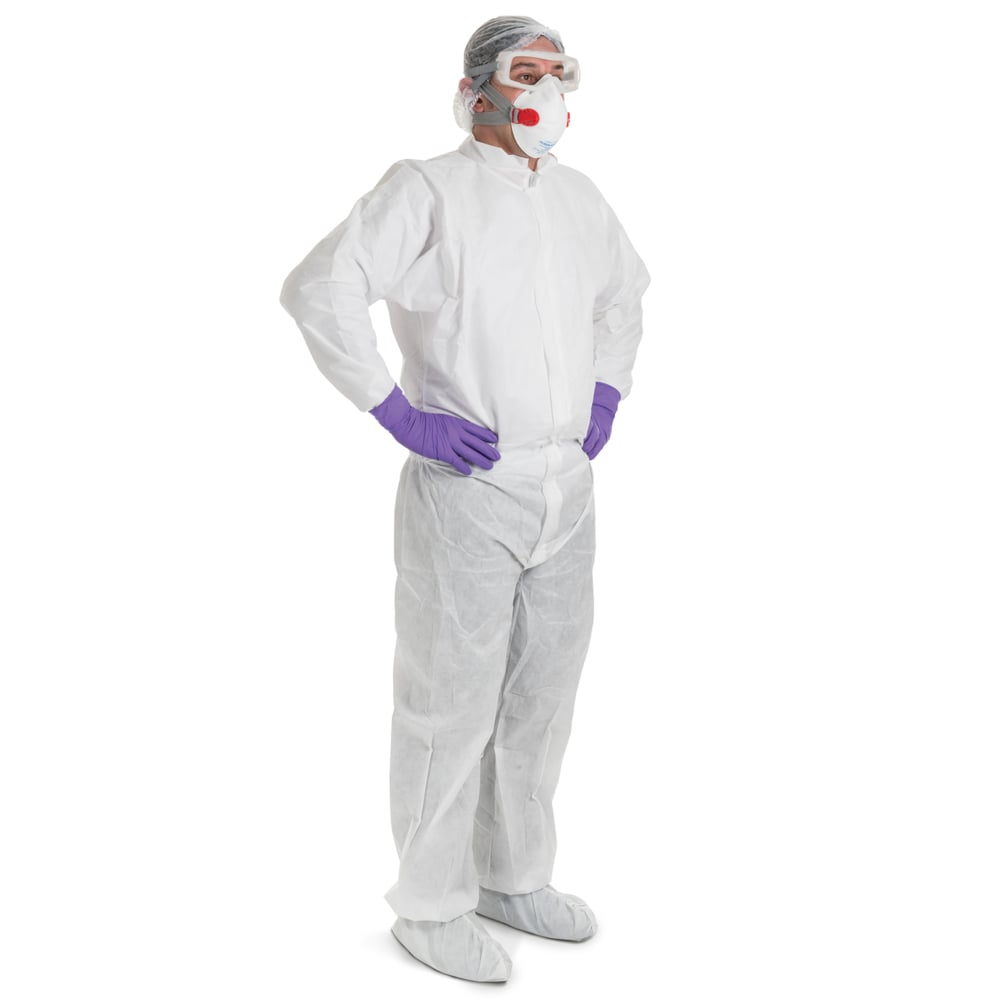
In cleanroom operations, what you wear matters as much as what you do. Cleanroom coveralls—also known as cleanroom suits—are one of the most essential garments for contamination control. Whether you’re in pharmaceutical production, electronics assembly, or medical device packaging, choosing the right coverall affects not only product integrity but also compliance, worker safety, and air quality.
In this guide, we’ll break down what cleanroom coveralls are, how they work, types available, industry requirements, and how to choose the right one for your ISO-classified environment.
What Are Cleanroom Coveralls?

Cleanroom coveralls are full-body protective suits specifically designed for use in ISO-classified environments. They are made from lint-free, non-shedding materials, often treated to be anti-static, and designed to prevent contamination from skin particles, fibers, and electrostatic discharge (ESD).
They act as a barrier between the human body and the controlled space, reducing risks associated with airborne particles, microbes, and static.
Why Are Cleanroom Coveralls Important?
Cleanroom garments are not just uniforms—they’re risk mitigation tools:
• Contamination Control: Proper coveralls block skin flakes, lint, and hair.
• ESD Protection: ESD properties help neutralize static that could damage components.
• Compliance: Garments often need to meet ISO, GMP, or other standards.
• Worker Safety: Offer protection when handling hazardous substances or sterile zones.
Types of Cleanroom Coveralls
•Disposable (Polypropylene): Single-use, cost-effective, for ISO 8+ cleanrooms.
• Reusable (Polyester with Carbon): Washable, ESD-safe, for ISO 5–7.
• Sterile Coveralls: Gamma-irradiated or EO-sterilized, used in pharma environments.
• Microporous/SMS Laminates: Liquid/particle resistant, breathable, for industrial cleanrooms.
Material Considerations
Common materials include:
• Tyvek®: Lightweight, breathable, superior particulate and fluid barrier.
• MP (Microporous Film): Tyvek alternative, slightly heavier, lower cost.
• SMS Tri-laminate: Fabric-like, not suitable for ISO 5 or cleaner.
• Polyester + Carbon Yarn: Reusable ESD garments with static protection.
Cleanroom Suit Features to Look For
•Attached Hood & Boots: For full coverage in ISO 5–6 areas.
• Elastic Wrists & Ankles: Prevent particle escape.
• Zipper Covers & Sealed Seams: Minimize lint release.
• Sterility Assurance: Required in aseptic zones.
• Fit & Comfort: Critical for long-term wear.
Care and Maintenance (for Reusables)
Reusable coveralls should be laundered in certified facilities, validated post-wash, and tracked for replacement. Full-service rental providers are commonly used in large facilities.
Conclusion
Cleanroom coveralls are more than clothing—they’re engineered safeguards. Choosing the right type depends on your cleanroom class, compliance needs, ESD sensitivity, and budget.
Whether for ISO 8 dry packaging or ISO 5 aseptic zones, proper coveralls reduce contamination risk and ensure compliance.

